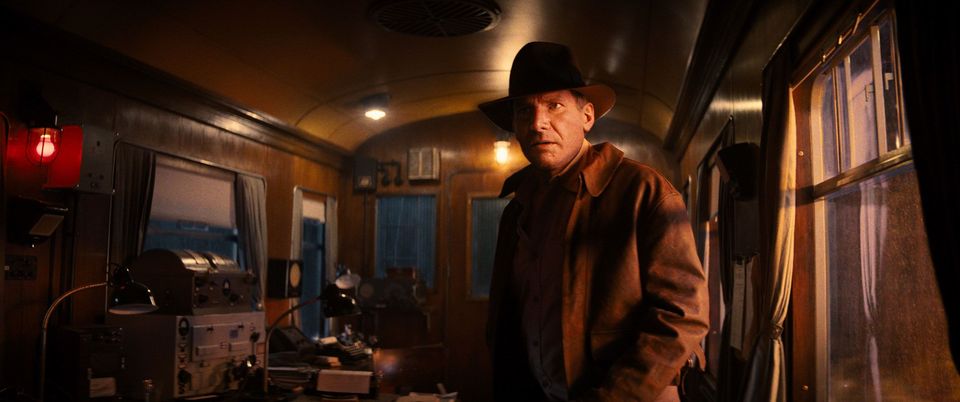Indiana Jones and the Dial of Destiny

It's been four decades since Steven Spielberg and George Lucas introduced the world to Indiana Jones, America's first fictional fascist fighter. The whip-welding, sharp-shooting, Nazi-punching hunk of an archeology professor captured audiences across the globe, though the artifacts he took were all brought to New York City. Now, James Mangold, director of "Logan," takes us back to Indiana Jones' world, after WWII, and to the strange year of 1969. Jones is no longer a young globe-trotting whippersnapper. Instead, he's a grumpy curmudgeon of a man, irked by the racket of his downstairs neighbour.
That theme carries across the film's story, choosing to lean into Harrison Ford's maturing. The once great diving boat he used to go on grand adventures with is a rusting, dilapidated bunch of scrap. The streets of Tangier he used to know so well have changed their corners, leaving him lost in the new city's maze. But the inadvertent effect of this motif is that we are then invited to compare the film to its predecessors, and subsequently, find it sorely lacking.
Movie-making technology has undoubtedly improved in the years since 1981. That may be the problem. Rather than utilizing practical effects dense with meaning or cinematography laced with tension and information, "The Dial of Destiny" relies on CGI to fulfill even the most basic of shots. Firstly, the de-aged Indiana Jones of the film's flashbacks sits in that same uncanny valley of 2004's "The Polar Express," looking neither human nor computer-generated but some bastardized between. Secondly, the de-aging tech then necessitates that those same shots are lit poorly in order to not cast too much light upon the dreadful countenance of young Indiana Jones. So much of the film's action is illegible because you simply cannot see what is happening. And thirdly, even if we accept the de-aging technology as necessary to the film's conceit and that Ford cannot possibly do his own stunts, there are simple shots within this film that are so blatantly computer-generated that it boggles the mind. Two of these shots involve the aged Jones walking down a city street. Neither of these are necessary, nor are they worth reminding us once again of the horrors of modern technology.
The film's dialogue is equally lackluster. The entire plot is predicated on the relationship between Jones and his god-daughter, Helena Shaw, played by Phoebe Waller-Bridge. But the script fails to make us invest in either character's journey or their combined arc. Instead, we're repeatedly reminded of their motivations in clunkier and clunkier ways. It's a tall fall from the franchise's roots, where a five minute scene of expository dialogue captured audience's imaginations with only four actors, a camera, and sharp cinematography.
The film's greatest strength is the physicality of its action sequences. Every single fight or chase in this film has at least one show-stopping kinetic showcase. While so much of the film's plot feels up in the air, these action sequences are grounded, fully realized, and most importantly, thrilling. It could be on atop a train's roof in a tight tunnel, barreling down crowded streets, or a horse ride through the New York City metro. Every sequence has some unique verve to it, that feels immediate and tangible. It's in these moments that "The Dial of Destiny" best recreates the joy of the franchise's prior installments. It's just a shame that they couldn't muster up that same imaginative spirit for the film's other parts, like its plot and characters.
"Indiana Jones and the Dial of Destiny" could have been an exciting return to a beloved character. But instead, it's a reminder of how much has changed for the Hollywood blockbuster. Gone are the vibrant shots, excellent blocking, plots so tight that you can't even remove a single second from the running time. Instead, we have vapid visuals, hollow characters, and every once in a while, a kernel of something interesting. Each time the studios attempt to revitalize a dormant franchise, we cling to these kernels and hope that there is better to come. But if "The Dial of Destiny" is any indication, we're doomed to repeat this cycle, working our way through the muck of a dull movie, trying to spot the potentially better movie just beyond the horizon.